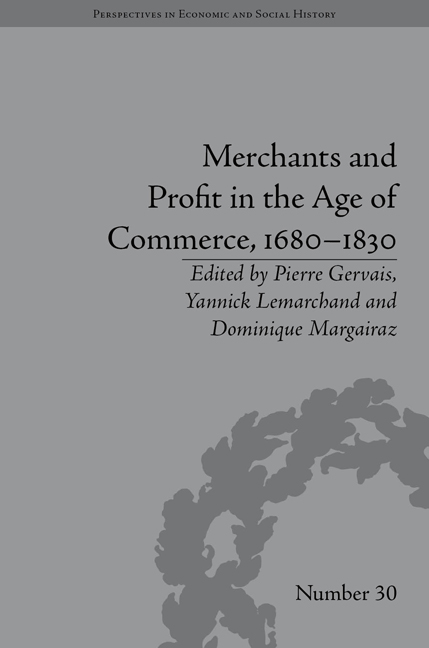Book contents
- Frontmatter
- CONTENTS
- Acknowledgements
- List of Contributors
- List of Figures and Tables
- Introduction: The Many Scales of Merchant Profit: Accounting for Norms, Practices and Results in the Age of Commerce
- Part I Understanding Merchant Transactions
- Part II The Credit Nexus and its Pitfalls
- 3 Terms of Payment in Retailing: A Tool for Fostering Customer Loyalty or a Form of Managerial Constraint? A Few Observations Based on Accounting from Lorraine in the Eighteenth Century
- 4 The Wings of a Butterfly: Private Creditor Strategies in the ‘Chinese Debts’ Crisis of 1779–80
- Part III Beyond Price Signals: The Institutional Framework
- Part IV Diversification and Risk Management
- Conclusion: Reorienting Early Modern Economic History: Merchant Economy, Merchant Capitalism and the Age of Commerce
- Notes
- Index
3 - Terms of Payment in Retailing: A Tool for Fostering Customer Loyalty or a Form of Managerial Constraint? A Few Observations Based on Accounting from Lorraine in the Eighteenth Century
from Part II - The Credit Nexus and its Pitfalls
- Frontmatter
- CONTENTS
- Acknowledgements
- List of Contributors
- List of Figures and Tables
- Introduction: The Many Scales of Merchant Profit: Accounting for Norms, Practices and Results in the Age of Commerce
- Part I Understanding Merchant Transactions
- Part II The Credit Nexus and its Pitfalls
- 3 Terms of Payment in Retailing: A Tool for Fostering Customer Loyalty or a Form of Managerial Constraint? A Few Observations Based on Accounting from Lorraine in the Eighteenth Century
- 4 The Wings of a Butterfly: Private Creditor Strategies in the ‘Chinese Debts’ Crisis of 1779–80
- Part III Beyond Price Signals: The Institutional Framework
- Part IV Diversification and Risk Management
- Conclusion: Reorienting Early Modern Economic History: Merchant Economy, Merchant Capitalism and the Age of Commerce
- Notes
- Index
Summary
Introduction
As discussed in Chapters 1 and 2, Basil Yamey has pointed out that merchants in the early modern period rarely tried to precisely calculate their profits. This may be explained in his view by practical reasons – among shopkeepers, by the hap-hazard character of debtors' payments. Indeed, calculating profit during a given period implied that one take into account immobilization: debts which had not been recovered after several months represented a loss of income for the merchant, since the amount, if it had been paid back quickly, might have been re invested. Since the vast majority of sales were made on credit, and payments were often made in the form of installments rather than in a lump sum, calculating the cost of immobilization on every sales operation was very difficult. Merchants, however, still tried to assess their profits and control their credit flows.
Credit relations are generally studied from the point of view of social history. Very few studies, however, have focused on the role played by credit in merchants' businesses, or in the management practices it induced. Researchers have often been stumped by this question, deemed unsolvable or too difficult to treat given the current state of the record, or else they remained content with a few passing remarks aimed at showing the global level of sales on credit.
- Type
- Chapter
- Information
- Merchants and Profit in the Age of Commerce, 1680–1830 , pp. 53 - 74Publisher: Pickering & ChattoFirst published in: 2014



